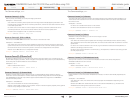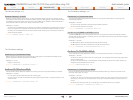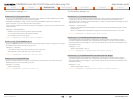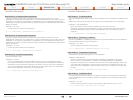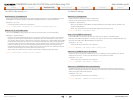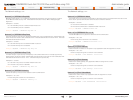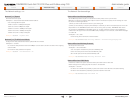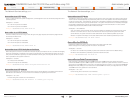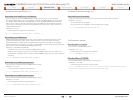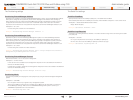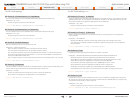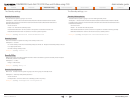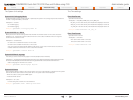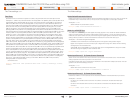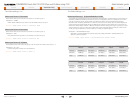
D14637.01—MARCH 2010
19
TANDBERG Quick Set C20/C20 Plus and Profiles using C20
Administrator guide
Contents Introduction Advanced configuration Password protection About monitors Appendices Contact us
www.tandberg.com
NetworkServices HTTP Mode
HTTP is a web-interface for system management, call management such as call transfer, diagnostics and
software uploads.
Valuespace: <On/Off>
On: The HTTP protocol is enabled.
Off: The HTTP protocol is disabled.
Example: NetworkServices HTTP Mode: On
NetworkServices HTTPS Mode
HTTPS is a Web protocol that encrypts and decrypts user page requests as well as the pages that are
returned by the Web server.
Valuespace: <On/Off>
On: The HTTPS protocol is enabled.
Off: The HTTPS protocol is disabled.
Example: NetworkServices HTTPS Mode: On
NetworkServices HTTPS VerifyServerCertificate
When the system connects to an external HTTPS server (like a phonebook server or an external manager),
this server will present a certificate to the system to identify itself. This setting tells the system if it should
verify that the certificate is signed by a trusted Certificate Authority (CA). This requires that list of trusted
CA’s is uploaded to the system in advance.
Valuespace: <On/Off>
On: Verify server certificates.
Off: Do not verify server certificates.
Example: NetworkServices HTTPS VerifyServerCerticate: Off
NetworkServices NTP Address
Enter the NTP Address to define the network time protocol server address. This address will be used if
NTP Mode is set to Manual, or if set to Auto and no address is supplied by a DHCP server.
Valuespace: <S: 0, 64>
Format: String with a maximum of 64 characters.
Example: NetworkServices NTP Address: “1.tandberg.pool.ntp.org”
NetworkServices NTP Mode
The Network Time Protocol (NTP) is used to synchronize the time of the system to a reference time server.
The time server will subsequently be queried every 24th hour for time updates. The time will be displayed
on the top of the screen. The system will use the time to timestamp messages transmitted to Gatekeepers
or Border Controllers requiring H.235 authentication. The system will use the time to timestamp messages
transmitted to Gatekeepers or Border Controllers that requires H.235 authentication. It is also used for
timestamping Placed Calls, Missed Calls and Received Calls.
Valuespace: <Auto/Manual>
Auto: The system will use the NTP server, by which address is supplied from the DHCP server in the
network. If no DHCP server is used, or the DHCP server does not provide the system with a NTP
server address, the system will use the static defined NTP server address specified by the user.
Manual: The system will always use the static defined NTP server address specified by the user.
Example: NetworkServices NTP Mode: Manual
NetworkServices SIP Mode
Determines whether the system should be able to place and receive SIP calls.
NOTE! Changes in this setting requires the codec to be restarted.
Valuespace: <On/Off>
On: Set to On to enable the possibility to place and receive SIP calls.This is the default setting.
Off: Set to Off to disable the possibility to place and receive SIP calls.
Example: NetworkServices SIP Mode: On
NetworkServices SNMP CommunityName
Enter the name of the Network Services SNMP Community. SNMP Community names are used to
authenticate SNMP requests. SNMP requests must have a ‘password’ (case sensitive) in order to receive a
response from the SNMP Agent in the codec. The default password is “public”. If you have the TANDBERG
Management Suite (TMS) you must make sure the same SNMP Community is configured there too. Note!
The SNMP Community password is case sensitive.
Valuespace: <S: 0, 50>
Format: String with a maximum of 50 characters.
Example: NetworkServices SNMP CommunityName: “public”
The Network Services settings, cont... The Network Services settings, cont...
Contact us
Contents
Introduction
Advanced configuration
Password protection
About monitors
Appendices
Advanced config.



